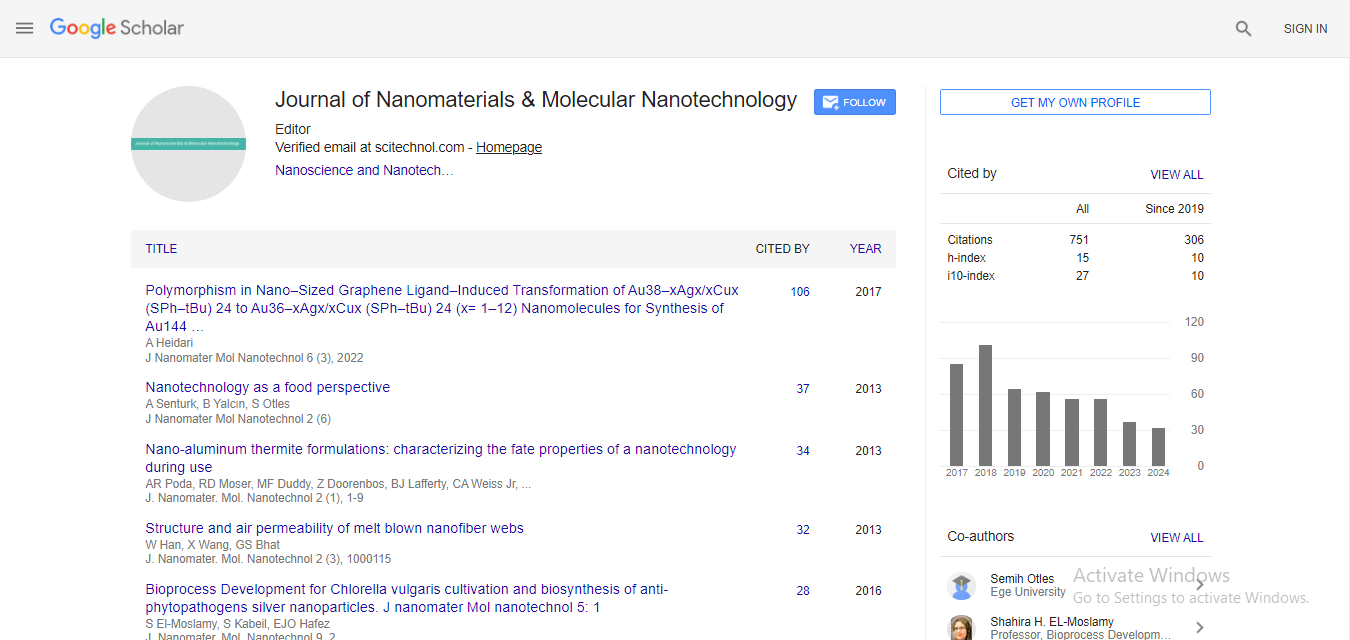Development of equipment for magnetron ion-plasma electrodispersing for nanostructure production
Berishvili ZV, Kordzakhia I I, Kakulia D G and Gurchumelia A P
LEPL Institute OPTICA, Georgia
Tbilisi State University, Georgia
: J Nanomater Mol Nanotechnol
Abstract
The method of electrodispersing of liquid-phase droplets is widely used in modern nanostructure technologies; it is based on the Rayleigh (capillary) instability. Due to that, if the droplet charge of R radius reaches the critical value Qcr = 8π (ε0αR3)1/2, the process of droplet distribution begins; here α is a surface tension coefficient. The droplets formed during emission process are also unsustainable, and we obtain the cascade decaying of droplets to the sizes (dmin≈8∙10-7 ε0α- 3). At this size the particles lose charge as a result of the electronic emission. For the majority of materials, these sizes comprise several nanometers and are distributed in a narrow range. Therefore, the methods of electro-dispersing are very promising to obtain highdispersed materials. In the 80s of the last century, we created the planar magnetron sputtering device. It is original construction and represents new generation of magnetrons with a rotating magnetic field. The flow of refrigerant fluid flows with high turbulence in the system and used for the rotation of magnetic unit in the cathode node. The refrigerant fluid flow falls with pressure on the holding blade of the magnetic system and triggers the rotation of the entire magnetic block. The rotation of the magnetic system, which is under the sputtering disc cathode-pellet in its immediate vicinity, ensures the synchronous rotation of the magnets, which are distributed along the closed contour under cathode surface. The configuration of the magnetic system derived mathematically by us, provides formation of the even erosion on the target surface. To date, we have developed a new and innovative planar magnetron sputtering device and the method of nanostructure production. The magnetron ion-plasma electrodispersing device and the vacuum equipment will provide the effective transition of the cathode-pellet material to nanostructures and synthesis of nanostructured materials of high purity. The equipment may be also used to synthesize 0D structures (quantum dots) and 2D structures (nano-layers). The equipment may be used in research laboratories.
Biography
E-mail: alexandre.gurchumelia@gmail.com
 Spanish
Spanish  Chinese
Chinese  Russian
Russian  German
German  French
French  Japanese
Japanese  Portuguese
Portuguese  Hindi
Hindi 



